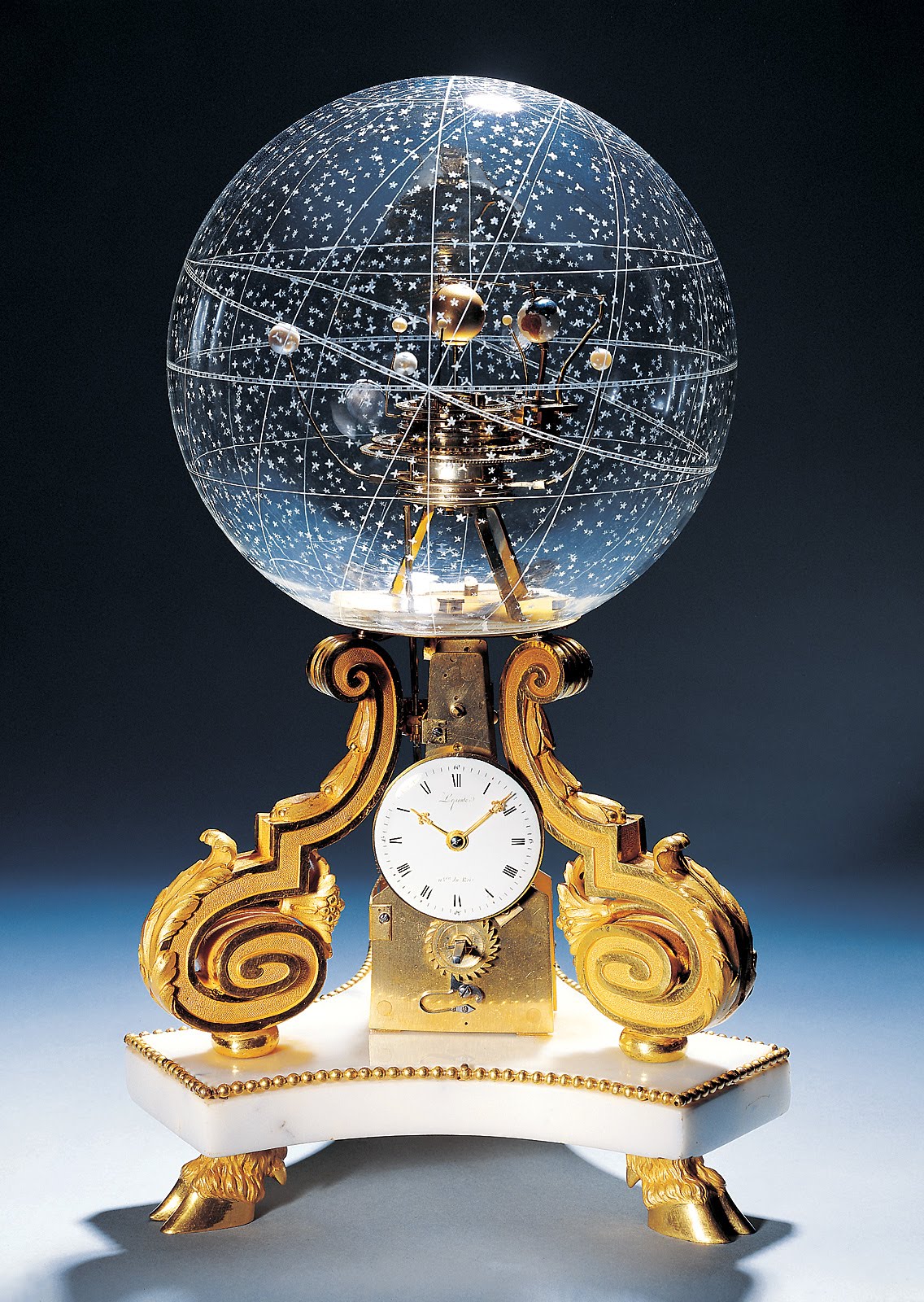
If you’re in Zurich, head over to the Beyer Clock and Watch Museum, which presents the history of timekeeping and timekeeping instruments, from 1400 BC to modern times. On display, you’ll find sundials, water and tower clocks, Renaissance automata, and pendulum clocks. And the Planetarium Table Clock featured above.
Made circa 1775, the planetarium clock keeps time … and so much more. According to the Museum of Artifacts website, the earth (look in the glass orb) “rotates around the sun in perfect real time.” And the “other five planets rotate as well–they “go up, down, around, in relation to the etched constellations of precisely positioned stars on the crystal globe, which if you are smart enough will reveal what season it is.” This fine timekeeping piece was the joint creation of Nicole-Reine Lepaute, a French astronomer who predicted the return of Halley’s Comet, and her husband, Jean-André Lepaute, who presided over a clockmaking dynasty and became horloger du Roi (clockmaker to the king).
It’s hard to imagine that the Planetarium clock didn’t somehow inspire a more modern creation–the Midnight Planétarium, an astronomical watch that shows the rotation of five planets — Mercury, Venus, Earth, Mars, Jupiter, and Saturn. It has a price tag of $220,000 (excluding sales tax). See it on display below.
If you would like to sign up for Open Culture’s free email newsletter, please find it here. It’s a great way to see our new posts, all bundled in one email, each day.
If you would like to support the mission of Open Culture, consider making a donation to our site. It’s hard to rely 100% on ads, and your contributions will help us continue providing the best free cultural and educational materials to learners everywhere. You can contribute through PayPal, Patreon, and Venmo (@openculture). Thanks!
Related Content:
How Clocks Changed Humanity Forever, Making Us Masters and Slaves of Time
Carl Sagan Presents Six Lectures on Earth, Mars & Our Solar System … For Kids (1977)


Amazingly mind-blowing; a magnificent splendor!